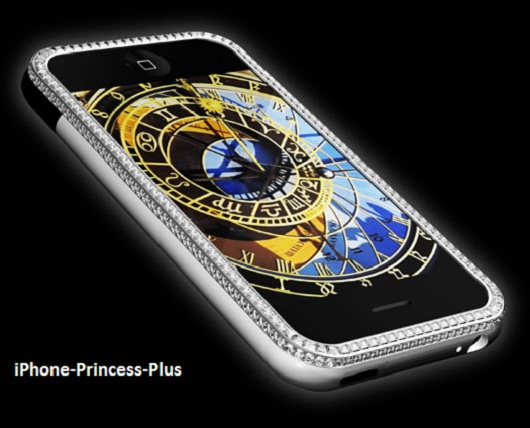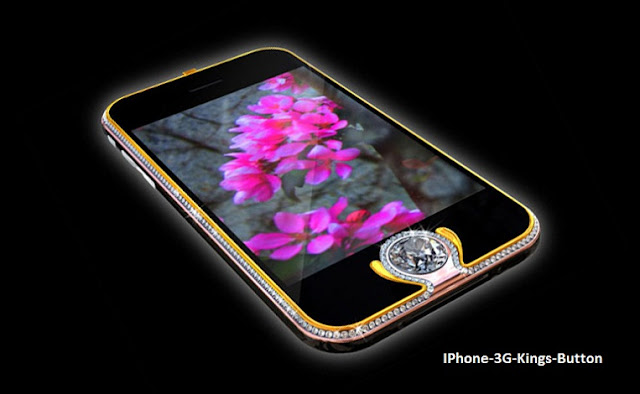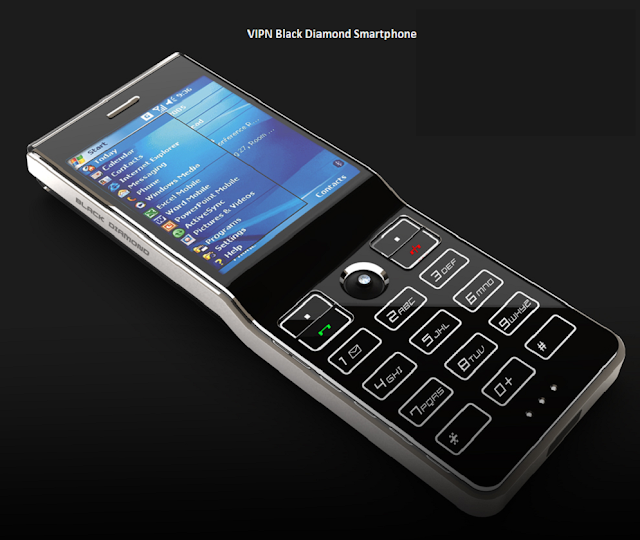1: Diamond Rose iPhone 4:
Stuart Hughes is a unique company which always make most expensive mobile phones This company have launched Diamond Rose iPhone 4 that have gotten the title of the most expensive phone in the world.Costing over a whopping $8 Million! The mobile sides are studded with 500 alluring diamonds. The Phone rear side is made using Rose gold with Apple company logo studded with 53 diamonds.The iPhone navigation button which is located in center is made up of a single cut 7.4 ct pink diamond.which i think more suitable for queen crown rather than a smartphone. One more interesting news about the most expensive smartphone is that whenever any one will purchase it The smartphone will be delivered inside a solid granite box. And The iPhone i think only fit for The Kings and they can take the selfie.
2: Supreme Goldstriker iPhone 3G 32GB:
Supreme Goldstriker In the 2nd Most Expensive phone on the list of World Most expensive phones. Its total cost is about $3.2 million and interesting thing is that this phone is also designed by Stuart Hughes as i already said that Stuart Hughes is the only team who designed most expensive smartphones/mobile phones.Supreme goldstriker iPhone 3G is coated with 136 F diamonds,271 grams of 22 carat solid and a 7.1 carat diamond is set on the Home button of the phone to give a attractive and luxurious finish and on top of this expensive phone has rare Kashmir gold and its inner lining is designed with nu-buck top grain animal skin and its look truly a master piece but you and me can only watch it in dreams......
3: iPhone 3G king's Button:
iPhone is world leading mobile phone company which always introduce the most expensive and best features smartphones.The iPhone 3G king's button is world third most expensive mobile phone.The Austria jeweler Peter Allison is the creator of this phone.138 diamonds are installed on this iPhone and due to these diamonds this iPhone worth is about $2.4 millions.The beautiful white diamonds of 6.6 carats serves as the home screen button which enhance the beauty of this smartphone.
4: Goldvish Le Million:
This Expensive phone is designed by renowned designer Emmanuel Gueit and it was lunched in Switzerland. This beautiful handcrafted phone is made of 18 carat white gold installed with 120 carat VVS-1graded diamonds. This phone is designed in limited quantity and only available on special request.In 2006 a Russian businessman bought this phone for 01 million euros.It also held the Guinness world record for being the World's most expensive phone in the world.
5: Diamond Crypto Smartphone:
This most expensive phone is not only laden with expensive metal and precious stones but it has also powerful encryption technology.The diamond crypto smartphone was developed to provide secure protection of information. The phone is made of solid platinum.the Ancort logo and navigation are 18 carat rose gold with 28 cut diamonds surrounding the navigation key, 25.5 princess cut diamond have decorated the sides of the phone and on top of the that here are 8 more beautiful diamonds affixed on to this expensive device. This most expensive diamond crypto smartphone cost is about $1.3 million.
6.Gresso Loxur las Vegas Jackpoy phone cost is almost $1million.This phone is unique becuase the diamond used in this expensive phone is not used in nay other phone.Gresso luxor Las Vegas Jackpot is covered with black diamonds. it is not only unique because of the black diamond but it/s the two hundred year old African blackwood at the back!But this is not all there are seventeen hand polished and etched sapphires in the keyboard too.
7: Black Diamond VIPN Smartphone:
This smartphone is sleek,seductive and in sexy shape.Black diamond is super thin with shape distinctive from other mobile phones.Two diamond has been installed in the phone,03 carat on the rear and 0.25 carat on the joystick.This thin beautiful and sexy shape world most expensive phone cost is about $300,000.and to add to the aura of the smartphone we can tell you only five of these were made,that what we call exclusive.
8: iPhone Princes Plus:
The only mobile phone fit for little princes is the iPhone princes plus.princes plus phone holds 318 diamonds,designed by Peter Aloisson.138 diamonds are in princes cut,set in 18 karat gold rim, The total cost of this most expensive phone is $176400.







